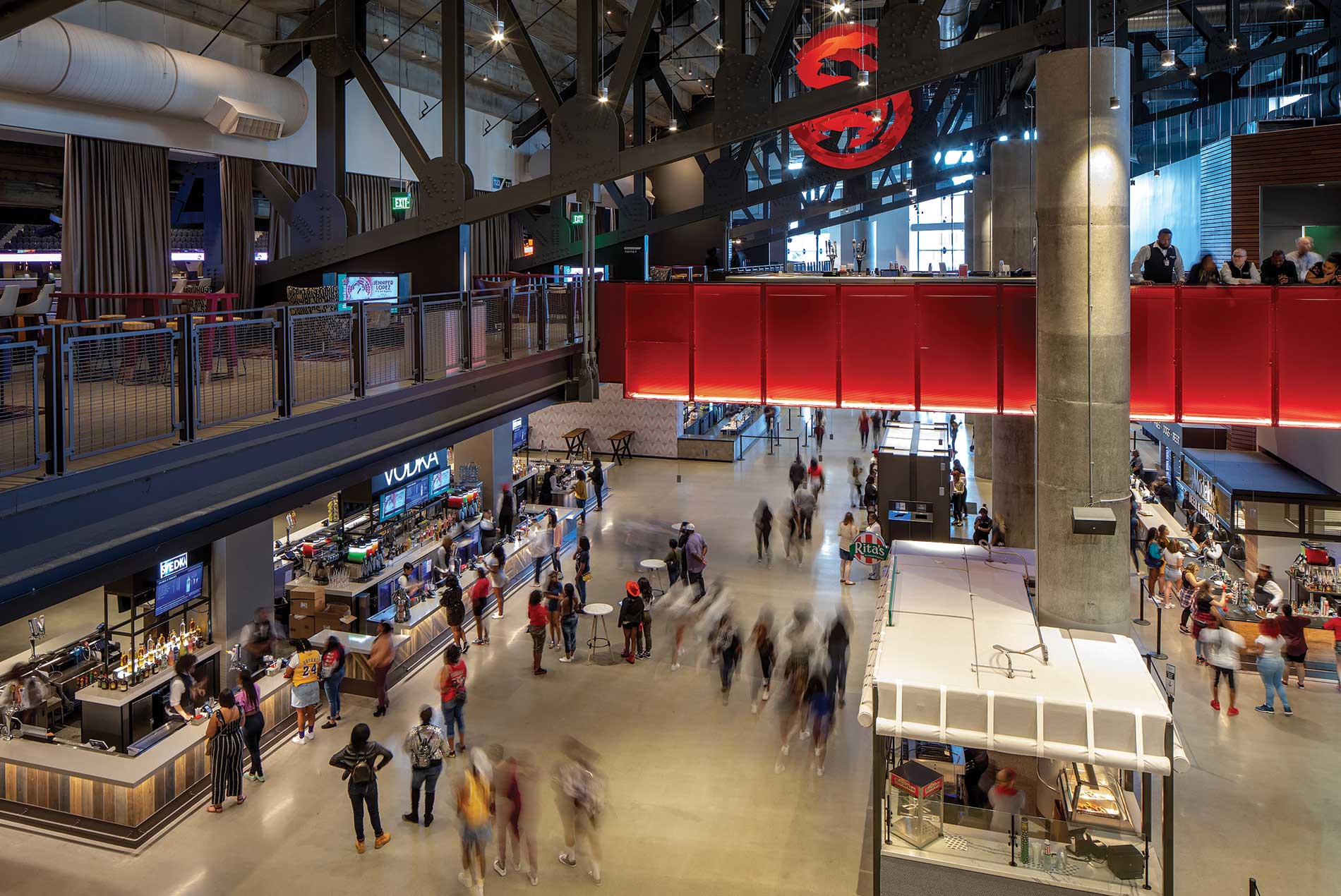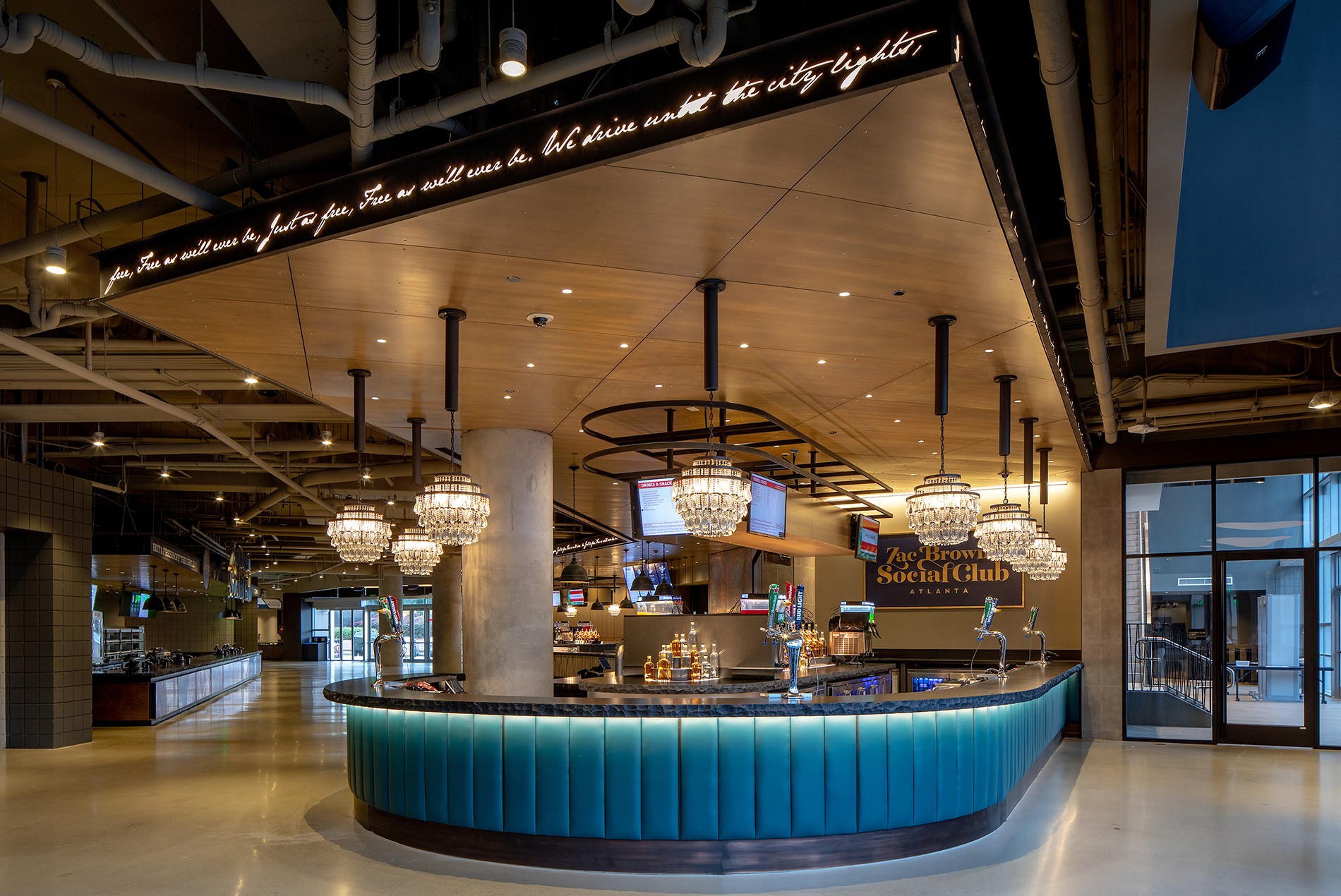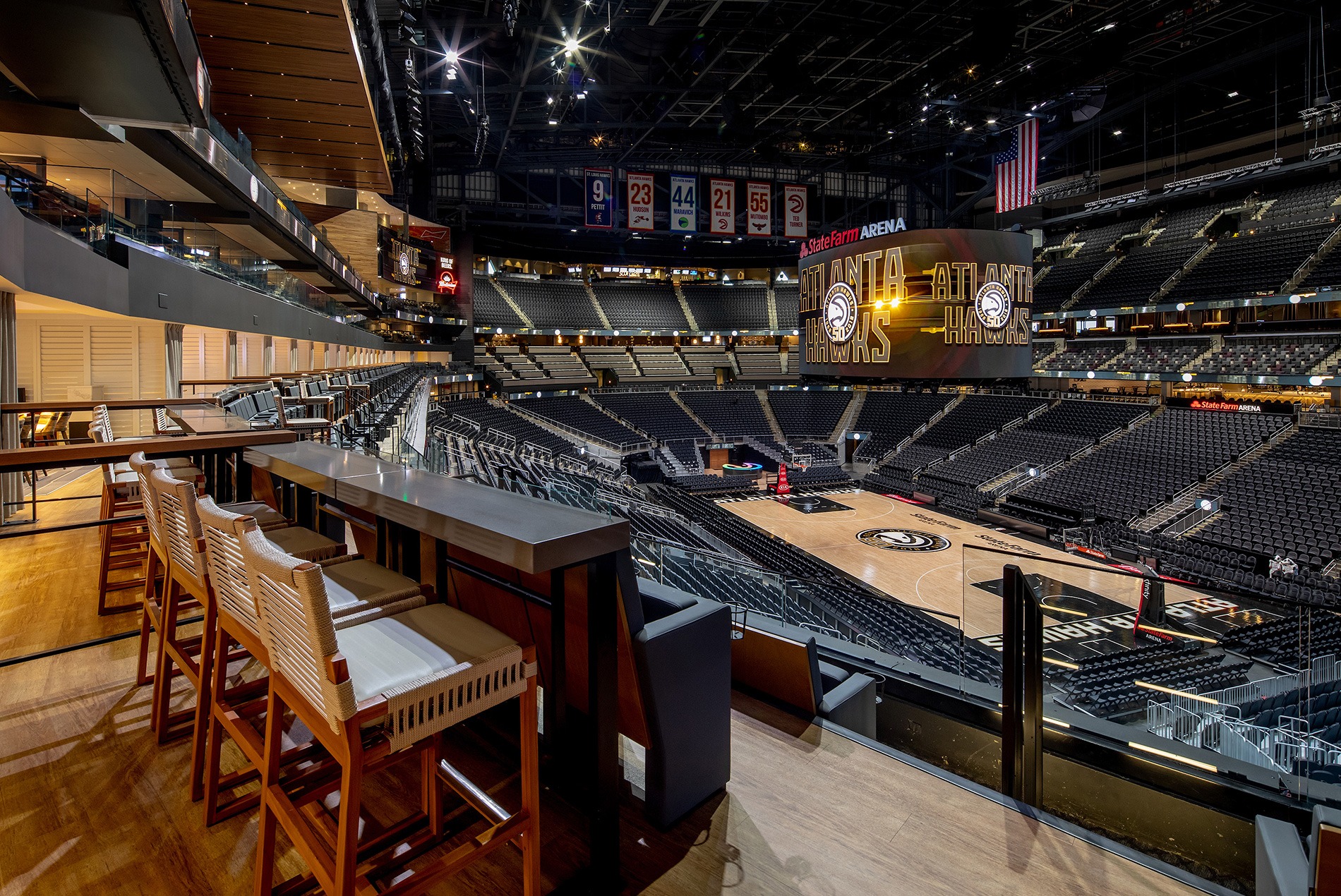The Atlanta Hawks modernized their home court at a fraction of the cost of building a new arena. Four years after the makeover of State Farm Arena, HOK project team members discuss the design details that continue to make the venue one of the NBA’s best.
With the cost of NBA arenas now routinely exceeding $1 billion, the Atlanta Hawks’ $192.5-million renovation of State Farm saved the franchise considerable time and money, while also creating a one-of-a-kind destination that keep fans coming back for more.
In the following Q+A, HOK project team members Jenna Mauer, Michelle Boe and Renee Petty share their thoughts on what made the renovation of the 20-year-old venue (previously named Philips Arena) so successful.
What was your design approach to create a unique sense of place for the State Farm Arena renovation?
Jenna Mauer: To kick off the project, the Atlanta Hawks took the project team on a four-hour tour of the BeltLine, an urban redevelopment project that connects the city’s neighborhoods through a 22-mile loop of trails and parks. Experiencing the BeltLine and the diverse neighborhoods that make up Atlanta inspired us to create similarly diverse experiences for fans at State Farm Arena.
Renee Petty: We added amenities that were true to Atlanta and essentially created a new living room for the city. The design encourages fans to see the venue as a place to socialize not just during the game, but before tipoff and well after the final buzzer.

Placemaking and local partnerships played a large role in this transformation. How did you determine what types of amenities to include?
Mauer: The Hawks are very engaged with the Atlanta community and were committed to showcasing the city’s unique foods, brands and hospitality. Their deep relationships, local partnerships and celebrity connections led to the creation of first-of-their-kind dining and service experiences. Zac Brown’s Social Club couples the musician and entrepreneur’s passion for food, music, design and hospitality in a space full of elevated food offerings and hand-crafted details from Zac’s own workshop. Killer Mike’s SWAG Shop lets fans get their hair cut with barber chairs directly overlooking the arena bowl. Giovanni DiPalma’s Little Italia collection of eateries infuses the arena with many of the city’s most-loved food options.

Petty: They also found ways to elevate the food and beverage experience. The spaces for food and beverage are hospitality-driven. The arena hired Joe Schafer, an award-winning Atlanta chef, who influenced the restaurant-style kitchens that are found even in general concession stands. From a chef’s club, with a rotating lineup of the region’s most admired chefs serving four-course meals, to creative takes on traditional sports venue food, Schafer has infused quality and variety into the space. It’s definitely a fan favorite—Forbes Travel named State Farm “the NBA’s tastiest arena.” This approach to food and beverage has since been emulated by other teams across the NBA, NFL and MLS.
What was the greatest design challenge for the arena’s renovation?
Michelle Boe: There were extensive structural modifications and MEP upgrades that functionally improved the arena further than the eye can see. One of our main goals in the transformation was to improve sightlines to the bowl and create 360-degree circulation around the arena for fans. Previously, four levels of suites and offices on the arena’s west side blocked that full circulation. We also needed to remove columns that obstructed views to the bowl. Breaking down those barriers was one of the greatest design challenges.
We repurposed the previous wall of suites and offices as viewing terraces, multilevel connection points, open suites and the Atlanta Social space. To make the experience more dynamic, we opened up the concourses with bars and drink rails overlooking the bowl.
Mauer: These changes had a remarkable impact on the interior of the arena. We had people congratulate us on the new building, forgetting this was a renovation because of how dramatic the differences were inside.
How did you incorporate flexibility into the design?
Mauer: One of the most helpful things you can do for a client is build flexibility into their premium products. In the Atlanta Social space, we incorporated multiple sized sofas and club chairs instead of traditional fixed seating. The sofas and chairs can be rearranged to modify the quantity of seats.
We also worked with the Hawks to research what spaces within the arena were under-performing and determine how seating options could be reimagined to boost revenue. One of the solutions we proposed was the NBA’s first courtside club, repurposing underutilized back of house space. We designed veranda suites where previous traditional suites sat, which was a nod to the city’s culture. These spaces included high-end furnishings and fixtures and doorways that allow them to connect to other suites and the bowl, which maximizes future options for the team.

Since opening, have you continued engaging with the Hawks for any updates to the arena?
Petty: We’ve taken on additional projects since the renovation completed, including working with the team on sustainable design strategies. The Hawks also recently partnered with Novelis to continue pushing the limits of sustainability within the arena. Earlier this year the Hawks shared that they became the world’s first sports and live entertainment venue to receive TRUE platinum certification for zero waste. State Farm Arena now diverts 91% of its fan-generated waste away from landfills, composts 44% and reuses or recycles the remaining 47%. It’s amazing to be a part of such a sustainable project.
What are the key lessons learned from the State Farm Arena’s transformation?
Boe: It takes an open mind and a truly collaborative process and project team—from the designers, estimators, contractor, client and more—to create something great. We were able to study all the potential renovation options and determine the best path forward, whether it be knocking out the wall of suites or removing complex structural columns. Our strong relationship and open communication with the client made this project truly transformative.